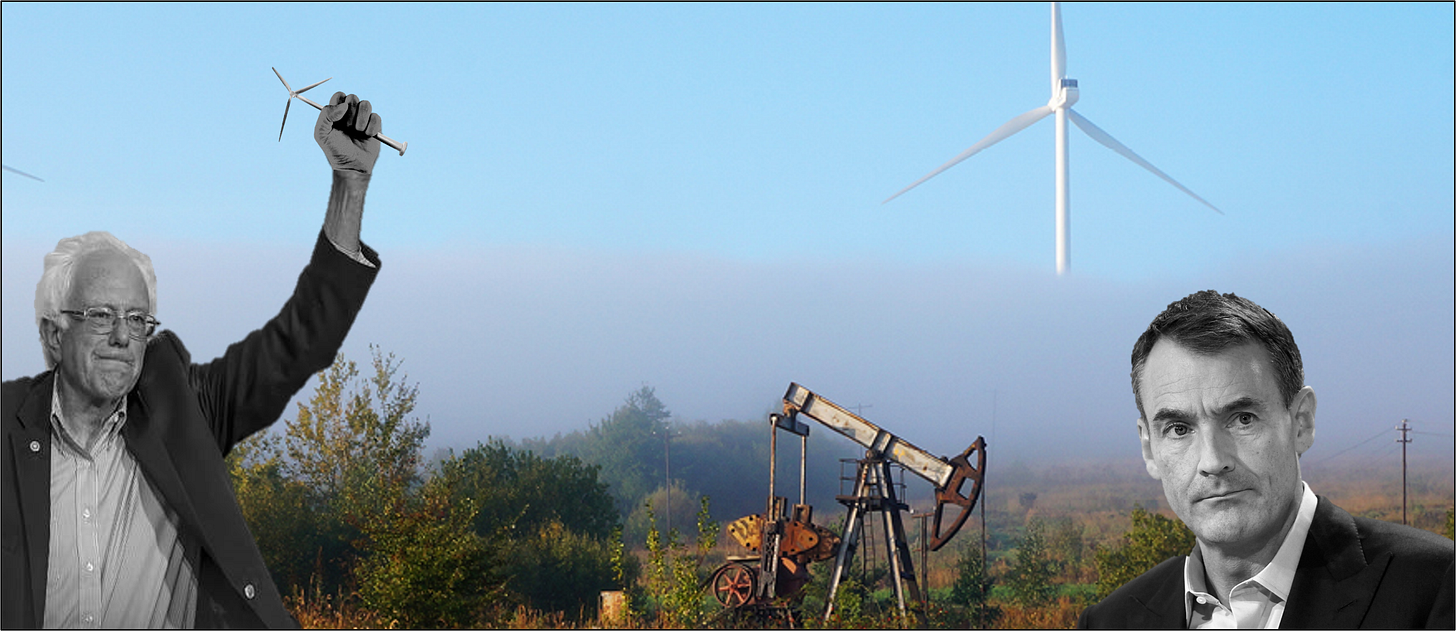The Seismic Shift Taking Place in Energy
the Plug #13 | On Energy Transitions
What I find most interesting about the energy industry is how much it’s changed over time.
The way we use energy today looks totally different from 50 years ago. And, given the accelerating pace of human innovation, it will be virtually unrecognizable 50 years from now.
There are currently massive changes taking place in the world of energy. The symptoms of which show up all around us: in news headlines, day-to-day conversations, and political promises.
So it’s worth asking the question - what the hell’s going on with energy right now?!
To understand where we’re going, let’s start by taking a step back and revisiting how our energy system got to where it is today.
Buckle up.
A “Not Boring” History Lesson 🍻
As recently as the early 1800s, the only means by which humans could generate energy was by burning wood and other biomass.
Imagine how challenging it would be to charge your iPhone with a wood fire.
Biomass has a low energy density, meaning it’s not a very efficient energy source. It also creates a shit ton of smoke. Which makes using it inside quite challenging.
So, our ancestors kept looking for other options.
And eventually, they discovered coal. Coal began replacing biomass as a source of energy in the early 1800s. By 1910, coal made up ~55% of total global energy consumption. But it too had several challenges. So once again, innovators were on the hunt for other options.
Then they stumbled upon black gold.
By the mid-1960s, oil had replaced coal as the most in-demand primary energy source globally. It still holds that title today.

That’s all without mentioning natural gas, nuclear energy, or renewables; each of which is an integral part of our energy system today1.
The point is - for three centuries, the way we’ve used energy has been changing constantly. And in that time, different energy sources have fallen in and out of favour for a variety of reasons.
The only real constant during that time has been the exponential growth in global energy demand.

But enough with the history lesson.
Let’s talk about the changes taking place in our energy system right now.
Down With the Dinosaurs 🦖
Each successive year, it becomes increasingly obvious that climate change is an existential threat to humanity. To limit the impacts of that threat, it seems clear that we need to begin reducing global emissions yesterday.
Cue the latest “energy transition”: a shift away from fossil fuels, towards less emissions-intensive energy sources.
But Houston, we have a problem…
Fossil fuels are the bedrock of our global energy system. Transitioning away from them will be no easy feat.
Consider that in 1990, fossil fuels accounted for ~90% of the world’s primary energy. Twenty-five years later (2015), that figure had fallen to ~86%, only ~4% lower. In the coming two decades, countries globally have set the goal of reducing that figure by another 10%.
An optimistic objective, indeed.

By contrast, in 2018, renewable energies made up only ~11% of total primary energy globally.
To facilitate the transition away from fossil fuels, renewables will be required to do a lot of the heavy lifting.
A Good Bounce for Renewables 🏀
It may be helpful to share an example of what the next 30 years could look like in the world of energy.
The IEA released a report earlier this year titled “A Roadmap for the Global Energy System.” Its projections for our electrical grids help to illustrate the direction in which our energy system is headed.
In 2020, solar and wind technologies generated ~10%. of all electricity globally. By 2050, the IEA projects that figure will rise to ~45%.
Over that same time frame, oil, natural gas, and coal will all become less prevalent components in our electricity mix.

The winners and losers in that chart seem pretty clear….
As a leading authority on global energy, the IEA’s forecast holds some clout. So, I think it’s safe to assume that, at the very least, its projections will be directionally correct.
All that to say, amidst our push for decarbonization, we should expect the world to continue deploying renewable energy in the decades to come.
Very Slow Transitions Indeed ⏱️
Time will tell how close the IEA’s projections are to reality. It would not be the first to overestimate the speed of deployment for renewable energies.
Since pre-1980, overly optimistic projections of renewable energy deployment have been proven wrong time and time again. These misinformed projections highlight the reality that our energy system changes slowly, despite ambitions to the contrary.

There are a lot of uncertainties around what our energy system will look like thirty years from now in 2050.
What seems clear today is that the threat of climate change will continue to worsen and that a focus on decarbonization will remain front of mind for decades to come.
I’m excited to continue watching the evolution of our energy system. Surely the future will look completely different from what we expect.
So we should plan accordingly.
Interestingly, in 2014, biomass still made up a larger share of global energy consumption than did solar and wind energy combined. We’ll come back to that.


